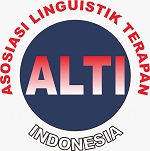Identifying Reading Comprehension Questions of National Examination for Senior High School Students
DOI:
https://doi.org/10.33394/jollt.v8i1.2239Keywords:
reading comprehension, reading questions types, national examinationAbstract
References
Aprianoto, & Haerazi (2019). Development and assessment of an interculture-based instrument model in the teaching of speaking skills. Universal Journal of Educational Research 7(12) pp. 2796-2805. DOI: https://doi.org/10.13189/ujer.2019.071230
Brown, H. D. (2004). Language assessment: Principles and classroom practices.
Day, R. R., & Park, J. S. (2005). Developing reading comprehension question”. Reading in a Foreign Language, Volume 17, No. 1, April 2005.
Ningsih, Ratna J, dkk. (2015). Bandung: Srikandi Setiawan, otong.
Davis, F. (1995). Introducing Reading. London: Penguin Books.
Gamma, T. W. (2018). Sonar Ekdplorasi USBN Plus UNBK/UNKP untuk SMA/MA IPA 2019. Bandung: Yrama Widya.
Garner, R. (1988). Metacognition and Reading Comprehension. New Jersey: Prentice Hall.
Haerazi, H., & Irawan, L. (2020). The effectiveness of ECOLA technique to improve reading comprehension in relation to motivation and self-efficacy. International Journal of Emerging Technologies in Learning (IJET), 15(01), pp. 61-76. doi: http://dx.doi.org/10.3991/ijet.v15i01.11495
Haerazi, H., Prayati, Z., & Vikasari, R. M. (2019). Practicing contextual teaching and learning (CTL) approach to improve students’ reading comprehension in relation to motivation. English Review: Journal of English Education, 8(1), 139-146. https://doi.org/10.25134/erjee.v8i1.2011
Haerazi, H., May Vikasari, R., & Prayati, Z. (2019). The use of scientific-based approach in ELT class to improve students’ achievement and classroom interaction. Register Journal, 12(2), 157-180. https://doi.org/10.18326/rgt.v12i2.157-180
Hairunisah, S. (2017). The effect of structured dyadic methods (SDM) towards students’ critical thinking in reading. Journal of Languages and Language Teaching, 5(2), 84-88. doi: https://doi.org/10.33394/.v5i2.363
Imran, F., Firman, E., & Raudhatunnisa, S. (2020). Applying think-talk-write (TTW) in the teaching of reading comprehension in relation to students’ critical thinking skills. Journal of Languages and Language Teaching, 7(1), 57-63. doi: https://doi.org/10.33394/.v7i1.1439
Kuperman, V., & Van Dyke, J. A. (2013). Reassessing word frequency as a determinant of word recognition for skilled and unskilled readers. Journal of Experimental Psychology: Human Perception and Performance, 39(3), 802–823. https://doi.org/10.1037/a0030859
LaÂ’biran, R. (2012). The Identification of test items form of English National Examination of Senior High School Level. Christian University of Indonesia Toraja.
Lail, H. (2019). Answering reading texts on English tryout test based on the 12th grade students' strategies at SMA Negeri 1 Kuripan Lombok Barat. Journal of Languages and Language Teaching, 7(1), 3-5. doi: https://doi.org/10.33394/.v7i1.1434
Lawrence1, J. F., Hagen, H. M., Hwang, J. K., Lin, G., & Lerva, A. (2018). Academic vocabulary and reading comprehension: Exploring the relationships across measures of vocabulary knowledge, Reading and Writing, 17 May (2018), https://doi.org/10.1007/s11145-018-9865-2
Lawrence, J. F., Crosson, A. C., Pare ´-Blagoev, E. J., & Snow, C. E. (2015). Word Generation randomized trial: Discussion mediates the impact of program treatment on academic word learning. American Educational Research Journal, 52(4), 750–786. https://doi.org/10.3102/0002831215579485
Marzuki, A. G. (2019). Developing students’ reading skills on Islamic texts through SQ3R method in an EFL class. REGISTER JOURNAL, 12(1), pp.49-61, DOI: http://dx.doi.org/10.18326/rgt.v12i1.49-61
Muhlisin, M., & Widyanto, A. (2019). An analysis on teacher’s communication strategies in teaching speaking at MTs NW Bonjeruk. Journal of Languages and Language Teaching, 7(2), 154-165. doi: https://doi.org/10.33394/.v7i2.1963
Novita, D. (2018). Syndicate learning: An alternative approach for teaching extensive reading. Journal of Languages and Language Teaching, 6(1), 27-33. doi: https://doi.org/10.33394/.v6i1.810
Nuttal, C. (1996). Teaching Reading Skills in a Foreign Language. Oxford: Heinemann Education Books.
Rahman, A., Masnayadi, M., Nerim, N., & Muslim, M. (2019). Developing English materials based on saintific approach through Islamic content for Islamic senior high school students. Journal of Languages and Language Teaching, 6(2), 86-95. doi: https://doi.org/10.33394/.v6i2.1259
Rohmah, H. (2018). The implementation of herringbone technique in reading comprehension at second semester of Non-English Department. Celt: A Journal of Culture, English Language Teaching & Literature, 18(1), July 2018, pp. 64 – 78, DOI: https://doi.org/10.24167/celt.v18i1
Rosenshine, B.V.(1980).“Skills hierarchies in reading comprehension”in Theoretical issues in reading comprehension: Perspectives from cognitive psychology, linguistics,artificial intelligence, and education.
Sulistyo, G. H. (2011). Reading for Meaning: theories, teaching strategies and assessment. Malang : Pustaka Kaiswaran.
Syafi, M. L. (2018). Using online short stories to improve the reading comprehension ability, REGISTER JOURNAL, 11(2), 2018, pp.121-138, DOI: http://dx.doi.org/10.18326/rgt.v11i2.168-191
Vibulpatanavong, K., & Evans, D. (2018). Phonological awareness and reading in Thai children, Reading and Writing, (2018) https://doi.org/10.1007/s11145-018-9867-0
Downloads
Published
How to Cite
Issue
Section
Citation Check
License
License and Publishing Agreement
In submitting the manuscript to the journal, the authors certify that:
- They are authorized by their co-authors to enter into these arrangements.
- The work described has not been formally published before, except in the form of an abstract or as part of a published lecture, review, thesis, or overlay journal.
- That it is not under consideration for publication elsewhere,
- That its publication has been approved by all the author(s) and by the responsible authorities – tacitly or explicitly – of the institutes where the work has been carried out.
- They secure the right to reproduce any material that has already been published or copyrighted elsewhere.
- They agree to the following license and publishing agreement.
Copyright
Authors who publish with JOLLT Journal of Languages and Language Teaching agree to the following terms:
- Authors retain copyright and grant the journal right of first publication with the work simultaneously licensed under a Creative Commons Attribution License (CC BY-SA 4.0) that allows others to share the work with an acknowledgment of the work's authorship and initial publication in this journal.Â
- Authors are able to enter into separate, additional contractual arrangements for the non-exclusive distribution of the journal's published version of the work (e.g., post it to an institutional repository or publish it in a book), with an acknowledgment of its initial publication in this journal.
- Authors are permitted and encouraged to post their work online (e.g., in institutional repositories or on their website) prior to and during the submission process, as it can lead to productive exchanges, as well as earlier and greater citation of published work.
Licensing for Data Publication
- Open Data Commons Attribution License, http://www.opendatacommons.org/licenses/by/1.0/ (default)
This work is licensed under a Creative Commons Attribution-ShareAlike 4.0 International License.
















